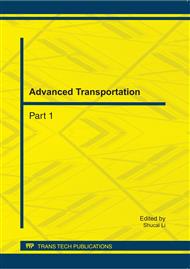p.327
p.334
p.340
p.347
p.352
p.360
p.367
p.373
p.378
Test Analysis on Shear Resistance Performance between Rubber-Asphalt Waterproofing Adhesive Layers
Abstract:
Based on the indoor shear test stimulation of the interface bonding force status of concrete bridge deck waterproof layers, conduct systematically analysis of various factors and regulations in layer shear resistance, in terms of asphalt spraying amount, gravel spreading type, bridge panel interface treatment conditions and environmental temperature, etc, to propose various technical measures for improving the shear resistance performance between rubber-asphalt waterproofing adhesive layers thus provide experimental basis and data support for the practical applications and construction quality. Research concludes that: in order to give full play to the shear resistance performance between rubber-asphalt waterproofing adhesive layers, the shear resistance and bond performance in high temperature state must be strictly controlled, the spray volume and spray temperature should be controlled at 1.8~2.2 kg/m2 and 190~200 °C.Meanwhile, the spreading gravels should be clean with preheating treatment, the diameter ranging from 2.36 mm to 4.75 mm; the spraying volume should be about 10kg/m2. In addition, the bridge panel surface coarseness should be controlled within a reasonable context, when the anti-sliding value is between 45 to 55, the maximum value of interlayer shear resistance strength appears.
Info:
Periodical:
Pages:
352-359
Citation:
Online since:
September 2011
Authors:
Price:
Сopyright:
© 2011 Trans Tech Publications Ltd. All Rights Reserved
Share:
Citation:


